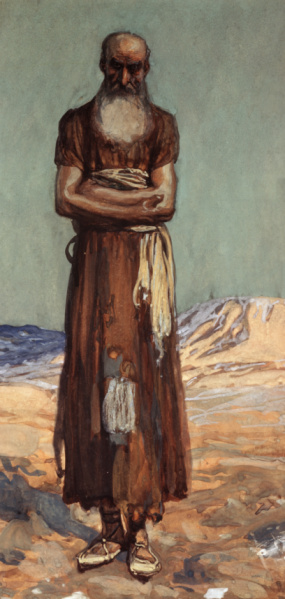Nahum
Nahum is a book from the Hebrew Bible and the Christian Old Testament, attributed to the prophet Nahum. The book, part of the collection known as the Twelve Minor Prophets, focuses on the fall of the Assyrian empire and its capital city, Nineveh. Nahum's writings are a combination of poetry and prophecy, emphasizing the themes of justice and divine retribution.
Content and Themes[edit | edit source]
The Book of Nahum consists of three chapters that detail the impending doom of Nineveh due to its sins against Yahweh, the God of Israel. Nahum describes the siege, the city's downfall, and the aftermath of its destruction, portraying these events as a manifestation of God's judgment against wickedness. The prophet's vivid imagery and poetic style convey the certainty of Nineveh's fate and the power of divine justice.
Historical Context[edit | edit source]
Nahum likely wrote in the late 7th century BCE, a period when the Assyrian empire was beginning to show signs of weakness. Assyria had been a dominant force in the Near East, known for its brutal military campaigns and oppressive rule. The empire's capital, Nineveh, was a symbol of its power and wealth. Nahum's prophecy against Nineveh can be seen within the broader historical context of the Assyrian empire's decline and eventual fall to the Babylonians in 612 BCE.
Interpretation and Significance[edit | edit source]
The Book of Nahum has been interpreted in various ways throughout history. It is often read as a celebration of divine justice, offering solace to those who have suffered under oppression. The specificity of Nahum's prophecy against Nineveh and its fulfillment has also been of interest to scholars studying the accuracy and historical context of biblical prophecies.
Nahum's message underscores the theme of theodicy, the vindication of divine goodness and providence in view of the existence of evil. By focusing on the downfall of an oppressive regime, Nahum contributes to the biblical narrative of God's involvement in human history to uphold justice and righteousness.
Structure[edit | edit source]
The book is structured into three chapters:
- Chapter 1 introduces Nahum's vision and the theme of God's judgment against Nineveh.
- Chapter 2 describes the siege of Nineveh in vivid detail.
- Chapter 3 pronounces woe upon the city, detailing its sins and the inevitability of its destruction.
Influence[edit | edit source]
The Book of Nahum has influenced religious thought, literature, and art throughout history. Its themes of justice and the downfall of the wicked have resonated with many readers, serving as a reminder of the transient nature of earthly powers and the ultimate authority of divine justice.
Search WikiMD
Ad.Tired of being Overweight? Try W8MD's physician weight loss program.
Semaglutide (Ozempic / Wegovy and Tirzepatide (Mounjaro / Zepbound) available.
Advertise on WikiMD
|
WikiMD's Wellness Encyclopedia |
| Let Food Be Thy Medicine Medicine Thy Food - Hippocrates |
Translate this page: - East Asian
中文,
日本,
한국어,
South Asian
हिन्दी,
தமிழ்,
తెలుగు,
Urdu,
ಕನ್ನಡ,
Southeast Asian
Indonesian,
Vietnamese,
Thai,
မြန်မာဘာသာ,
বাংলা
European
español,
Deutsch,
français,
Greek,
português do Brasil,
polski,
română,
русский,
Nederlands,
norsk,
svenska,
suomi,
Italian
Middle Eastern & African
عربى,
Turkish,
Persian,
Hebrew,
Afrikaans,
isiZulu,
Kiswahili,
Other
Bulgarian,
Hungarian,
Czech,
Swedish,
മലയാളം,
मराठी,
ਪੰਜਾਬੀ,
ગુજરાતી,
Portuguese,
Ukrainian
Medical Disclaimer: WikiMD is not a substitute for professional medical advice. The information on WikiMD is provided as an information resource only, may be incorrect, outdated or misleading, and is not to be used or relied on for any diagnostic or treatment purposes. Please consult your health care provider before making any healthcare decisions or for guidance about a specific medical condition. WikiMD expressly disclaims responsibility, and shall have no liability, for any damages, loss, injury, or liability whatsoever suffered as a result of your reliance on the information contained in this site. By visiting this site you agree to the foregoing terms and conditions, which may from time to time be changed or supplemented by WikiMD. If you do not agree to the foregoing terms and conditions, you should not enter or use this site. See full disclaimer.
Credits:Most images are courtesy of Wikimedia commons, and templates, categories Wikipedia, licensed under CC BY SA or similar.
Contributors: Prab R. Tumpati, MD



